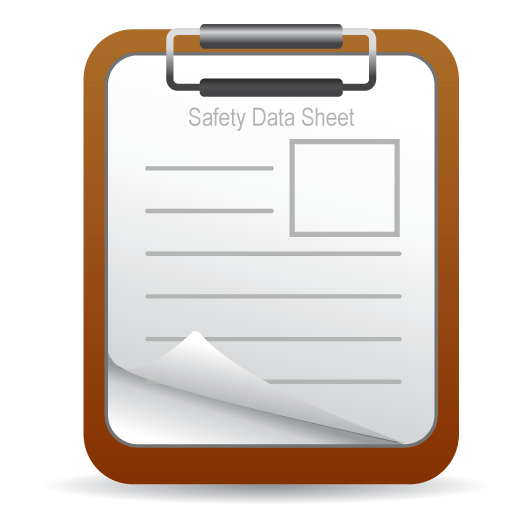
Alongside the other upcoming OSHA changes we have talked about, the new regulations require a 16 section format for Safety Data Sheets. This format is modeled after ANSI. The order and placement of each section is not allowed to be altered. Since the list is rather long, we will be breaking it up into three posts. Today we will be covering sections one through six.
The details of what are to be included in each section are as follows:
1. Identification
Section one identifies the chemical on the Safety Data Sheet and tells the recommended uses. Additionally, this section provides contact information for the supplier. Information in the section must include:
- The product identifier as well as any other common names or synonyms the substance may be known as.
- The manufacturers, importer, or responsible party’s name, address, and phone number as well an emergency number.
- A short description of the intended use of the chemical as well as any restrictions on use.
2. Hazard Identification
Section two identifies the hazards of the chemical and the appropriate warning information associated with those hazards. The required information consists of, the hazard classification of the chemical, signal word, hazard statement(s), pictograms, precautionary statement(s), and a description of any hazards not otherwise classified. For a mixture that contains an ingredient(s) with unknown toxicity, a statement describing how much (percentage) of the mixture consists of ingredient(s) with unknown acute toxicity must also be included.
3. Composition/Information on Ingredients
The third section of the Safety Data Sheet identifies the ingredient(s) in the indicated product. This will include information on substances (chemical name, common synonyms, Chemical Abstracts Service number, and impurities and stabilizing additives) mixtures (chemical names and concentrations), and all chemicals where trade secret is claimed.
4. First Aid Measures
This section provides information on what type of care should be given by untrained responders if an individual is exposed to the chemical. It should include necessary first-aid instructions by relevant routes of exposure, descriptions of the most important symptoms and effects of exposure as well as any effects that are acute or delayed, and recommendations for immediate care and/or necessary special treatment.
5. Fire-Fighting Measures
Section five details recommended means of fighting a fire caused by the chemical. Because the source of fire impacts how it can be fought this section needs to include recommendations of appropriate extinguishing equipment as well as information about equipment that is inappropriate. Additionally, this section needs to include advice on specific hazards that arise from the chemical burning and recommendations on protective gear or equipment that should be worn by firefighters.
6. Accidental Release Measures
Section six provides recommendations on the appropriate response to spills, leaks, or releases, including containment and cleanup practices to prevent or minimize exposure to people, properties, or the environment. It may also include recommendations distinguishing between responses for large and small spills where the spill volume has a significant impact on the hazard. The required information may consist of recommendations for:
- Use of personal precautions (such as removal of ignition sources or providing sufficient ventilation) and protective equipment to prevent the contamination of skin, eyes, and clothing.
- Emergency procedures, including instructions for evacuations, consulting experts when needed, and appropriate protective clothing.
- Methods and materials used for containment (e.g., covering the drains and capping procedures).
- Cleanup procedures (e.g., appropriate techniques for neutralization, decontamination, cleaning or vacuuming; adsorbent materials; and/or equipment required for containment/clean up)
Keep checking the blog for part two, coming soon. For complete information visit the OSHA website here.
More News From Heritage
-
3/12/24
Equal Pay Day – Spotlighting Our Female Drivers
-
3/8/24
International Women’s Week Spotlight – Shannon Dippel
For International Women's Week, we're spotlighting some of the incredible women in the Heritage family. Our final spotlight is Shannon Dippel.
-
3/8/24
International Women’s Week Spotlight – Susan Adams
For International Women's Week, we're spotlighting some of the incredible women in the Heritage family. Our sixth spotlight is Susan Adams.
-
3/7/24
International Women’s Week Spotlight – Lea Wilson
For International Women's Week, we're spotlighting some of the incredible women in the Heritage family. Our fifth spotlight is Lea Wilson
-
3/7/24
International Women’s Week Spotlight – Melissa Fisk
For International Women's Week, we're spotlighting some of the incredible women in the Heritage family. Our fourth spotlight is Melissa Fisk.
-
3/6/24
International Women’s Week Spotlight – Taylor Harvey
For International Women's Week, we're spotlighting some of the incredible women in the Heritage family. Our third spotlight is Taylor Harvey
-
3/5/24
International Women’s Week Spotlight – Karen Esquivel
For International Women's Week, we're spotlighting some of the incredible women in the Heritage family. Our second spotlight is Karen Esquivel.
-
3/5/24
Heritage Environmental Services Announces HP Nanda as CEO; CEO Jeff Laborsky Transitions to Board of Directors
Heritage Environmental Services (“HES”) announced today that HP Nanda will join the organization as CEO.








